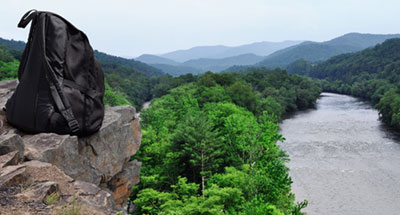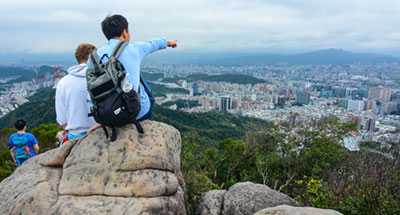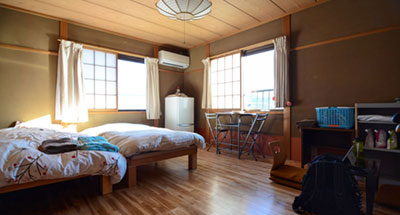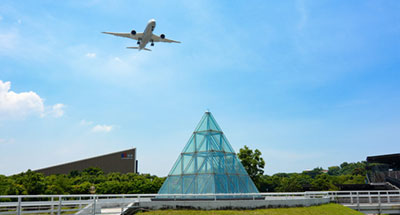Home > Travel Destinations > Japan
Kyoto's Meandering River Walk: The Kiyotaki to Takao Hiking Trail
While most tourists are drawn to Kyoto by the city's famous temples, shrines, and castles, Japan's former capital is also rich in surrounding nature if you dare to venture out from the bustling city center. Of all the hiking trails I explored in the area, my favorite is the Kiyotaki to Takao Trail. In fact, I liked it so much that I walked it four times to enjoy its fresh greens in spring and fiery reds in autumn.
The trail traces the Kiyotaki River in the mountainous west of Kyoto, connecting the two small towns of Kiyotaki and Takao. It's not a long trail, only about 2 miles (a few kilometers) between the towns, but it's one-way, so if you backtrack to your starting point you can expect to accumulate about 4 miles of walking total. It's possible to take a bus to Takao and start from the north end of the trail, but I preferred to start from Arashiyama to the south where I was staying.
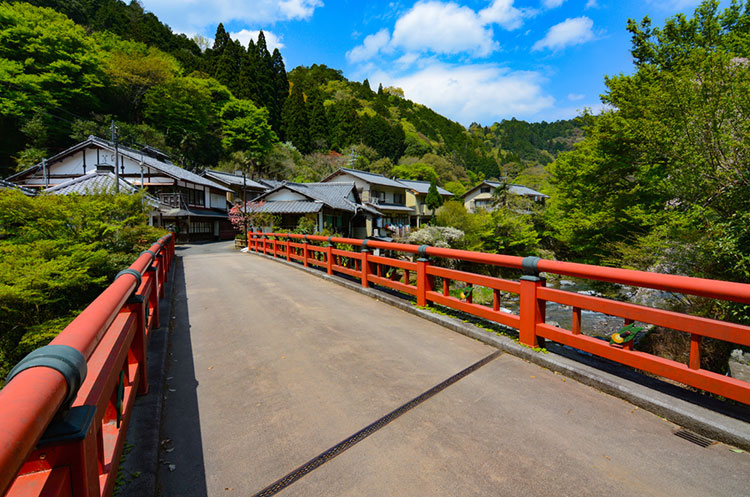
A low-traffic road connects from Arashiyama to Kiyotaki. Starting at Otagi Nenbutsuji Temple in northwest Arashiyama, just follow the road north. You can either walk through the tunnel or take the ramp, they both meet at the other end. When the road splits at the bus stop, follow the lower left road until you arrive at the beautiful red bridge marking the entrance to the small town of Kiyotaki.
It was around this area that I saw a tanuki scurry across the road for the first time. It's known in English as a Japanese raccoon dog, and has been popularized outside Japan by the "Tanooki Suit" that can be acquired in Super Mario Bros. 3. Deer are also common in the area at night.
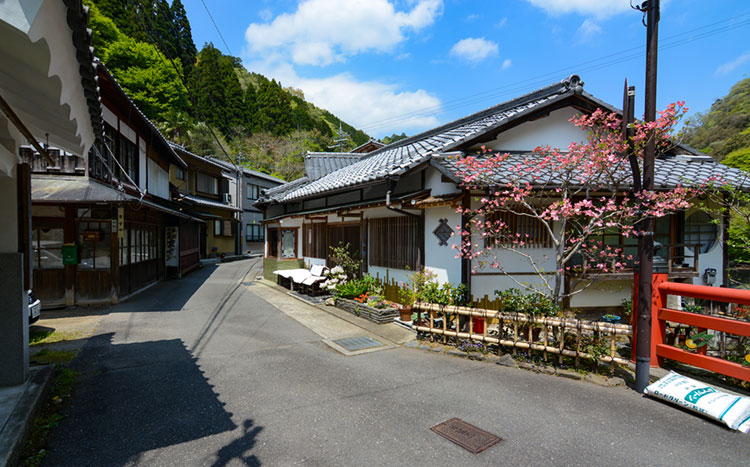
Follow the road north through town and you'll come to a second, less-colorful bridge. The narrow, paved road on the west side of this bridge heading north along the river is the point to hop on the Kiyotaki to Takao Trail. The signs in Japanese nearby may say something about the Kyoto Trail and the Tokai Nature Trail, the latter of which is a whopping 1,697 kilometers, but don't worry, they seem to just share a portion of the Kiyotaki to Takao Trail.
Stay on the paved road until you reach a bend where a trail joins with the road on the right side. That's your route to Takao. The signs are all in Japanese, but the Kiyotaki to Takao signs feature two red maple leaves to help you identify them.

Among the wildlife that calls the Kiyotaki River home is the Japanese giant salamander. Surprisingly, the three-member family that this monstrous amphibian belongs to includes the hellbender salamander, which is said to inhabit some of the streams where I lived in North Carolina. There's a huge difference though. The hellbender can reach a length of 29 in (74 cm) and weigh up to 5.5 lb (2.5 kg), while the Japanese giant salamander can reach 5 ft (152 cm) in length and weigh 55 lb (25 kg). However, the third member of the family, the critically endangered Chinese giant salamander, can reach 5.9 ft (180 cm) and weigh 110 lb (50 kg). Fascinating creatures! And sadly, all threatened by man.
I kept scanning the crystal clear waters of the river for any signs of the rare salamander, but I never did end up spotting one.


Due to the types of rocks found in the Kiyotaki River, the water displays a beautiful emerald blue color when the sun hits it, particularly in areas where the river is deeper. If you stare into it long enough, you may spot a fish or two, as the clarity of the water doesn't allow them to hide very well.
A few places are deep enough to go for a refreshing swim if you can tolerate the cold water. One such place is right next to a spring that filters through grassy rocks on its descent into the river.
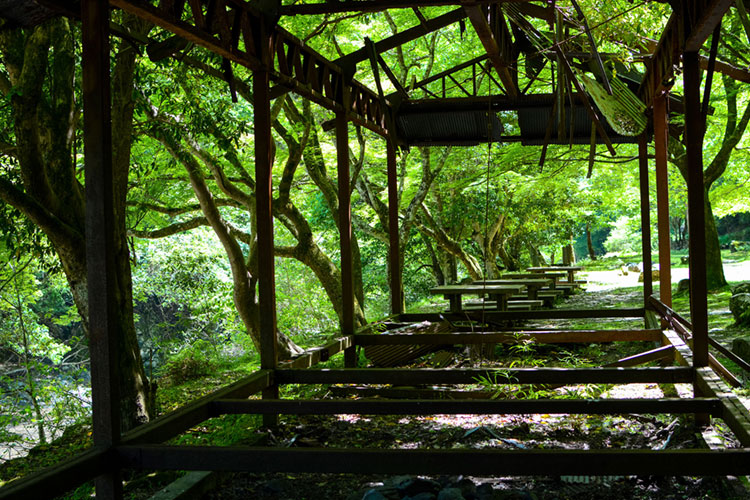
There's at least a couple abandoned buildings in the area, and in one case only the remaining frame of a building is intact. I got the impression that perhaps efforts were made in the past to boost tourism to the area, and it wasn't so successful. Indeed, I passed very few other hikers, and many of the shops at either end of the route seemed to be closed or seasonal. There is, however, a modest uptick in visitors during autumn. As the red maple leaves on the trail signposts hint, the tree is abundant along the majority of the river's course, bringing a ruddy charm to the area in mid-November and accordingly a few more color-seeking visitors.

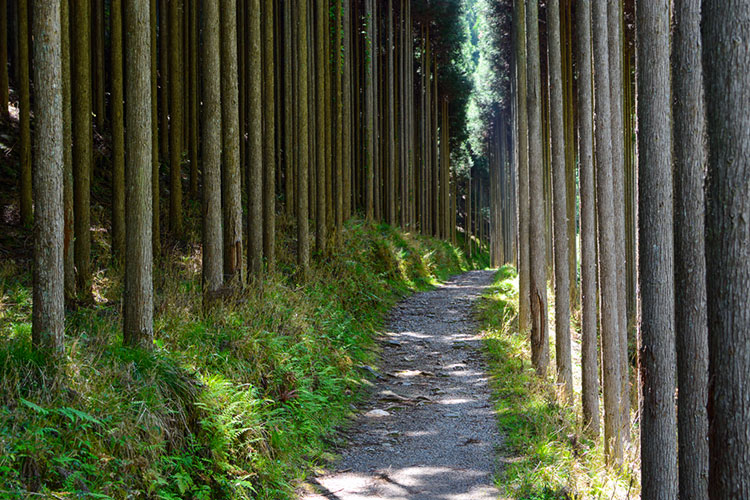
Part of the Kiyotaki to Takao Trail passes through a stand of Kitayama sugi (cedar) trees, or as I used to call them until I learned the real name, telephone pole trees. The near-perfect straightness of the trunk makes the cedar a favorite for timber production, with many traditional Japanese homes, tearooms, and temples incorporating its wood. However, since conifers like the Kitayama cedar are softwood trees, the wood is primarily used for aesthetics, not weight-bearing construction purposes.
The straightness of the trees isn't necessarily always natural. Foresters sometimes prune the lower branches to encourage a straighter, knot free trunk as the tree grows. The mountainous areas of northwestern Kyoto are well-known for their cedar forests, which foresters have been planting and harvesting for 600 years.

Arriving at the small town of Takao, the trail crosses the river in front of a dam supplying hydropower for a small hydroelectric station. This is also where the northern trailhead is located, but backtracking at this point would miss out on some great sights. A walk along Takao's lantern-lit riverside is lovely, especially in the evening. There's also a series of temples on the mountainside with great views of the gorge below, and several more temples upstream from the town.
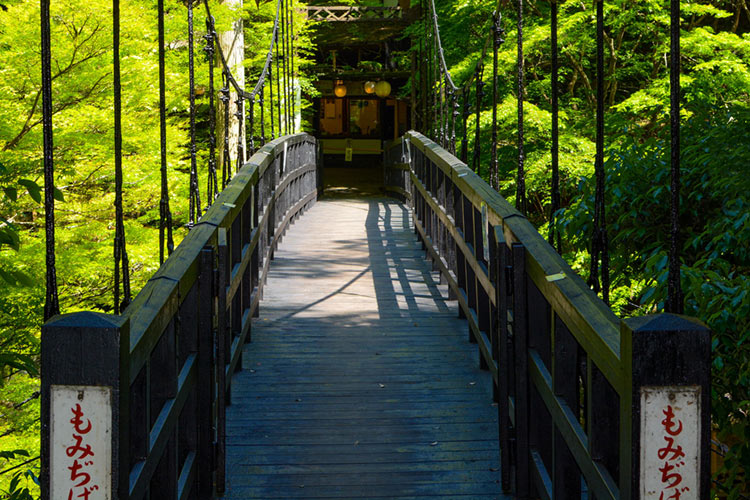
One of the more prominent sights along the river in Takao is the suspension bridge. No one will bother you for standing in the middle of it, but when I tried to cross to the other side to check out the buildings there, I was quickly intercepted by a well-dressed man whose fancy suit suggested it was not an establishment for mortals. Some reading reveals that the building is an annex serving as a ryokan (traditional Japanese inn) for the nearby Momijiya Hotel. With a $550 USD a night price tag, I suppose it makes sense that backpackers wouldn't be mistaken for guests.
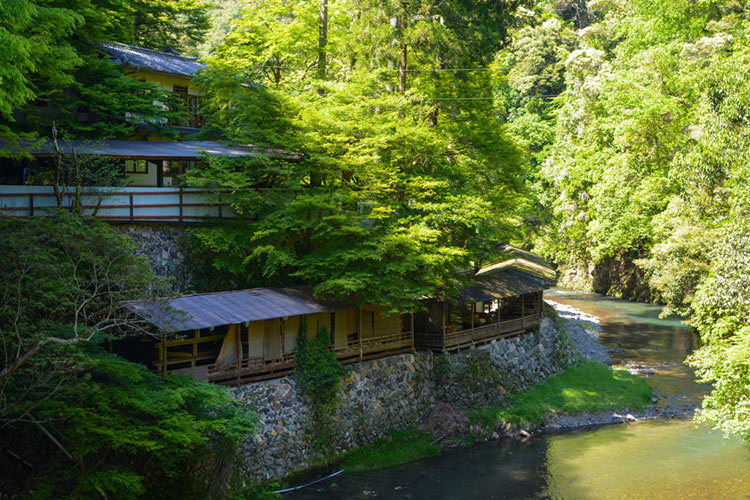
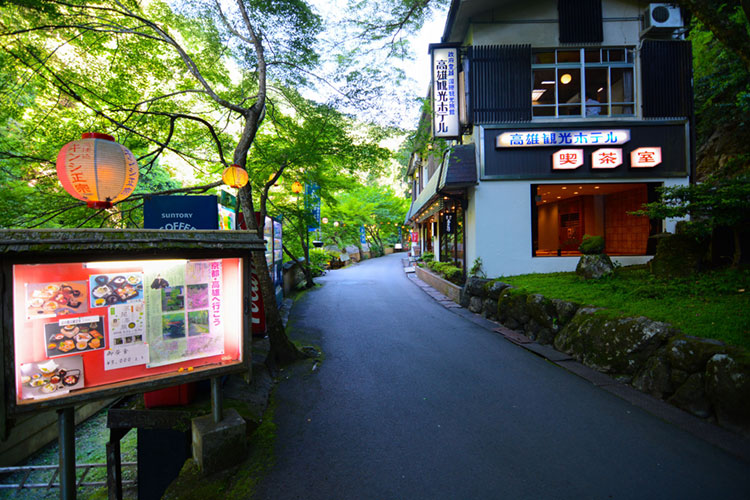
Takao is a quiet town with few residents, but its open-air restaurants along the river draw visitors in the evenings for lantern-lit dining surrounded by nature. The area draws a decent size crowd in autumn when red maples set the temple grounds ablaze, with Jingo-ji hosting night illuminations for foliage viewing.
There's one more sight in the area I always enjoyed visiting before doubling back to Kiyotaki, and it's only a short distance past Takao. To reach it, simply continue following the main road along the river until you come to a bright red bridge.
Saimyou-ji
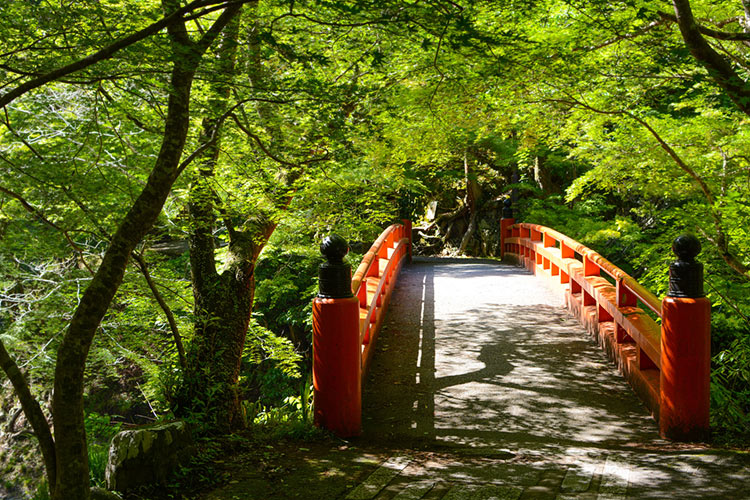
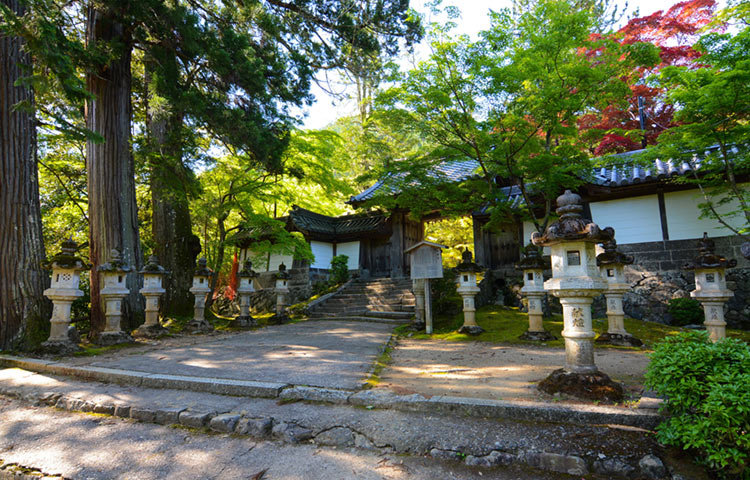
Across the bright red Shigetsukyou Bridge lies Saimyou-ji, a small temple that was originally founded as a detached branch of Jingo-ji, the larger temple in Takao. The first three times I came here it was free to walk in and I didn't see a single other person. When I returned in autumn there was a makeshift kiosk with a small fee. I've noticed the same pattern at a handful of other small temples around Kyoto that tend to only draw seasonal visitors.
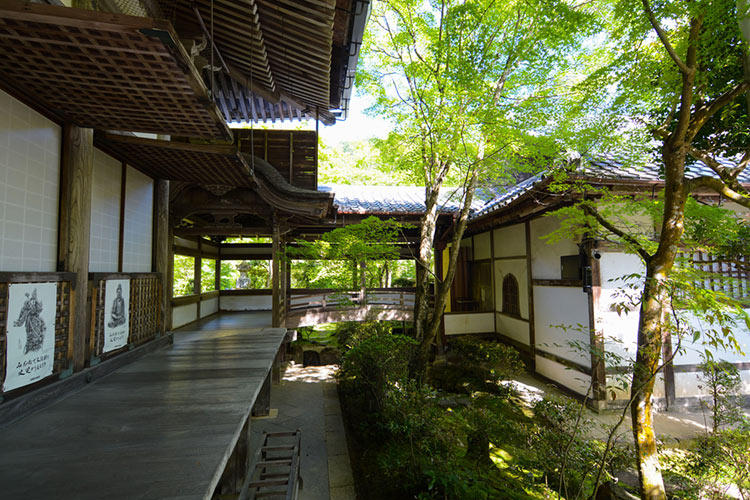
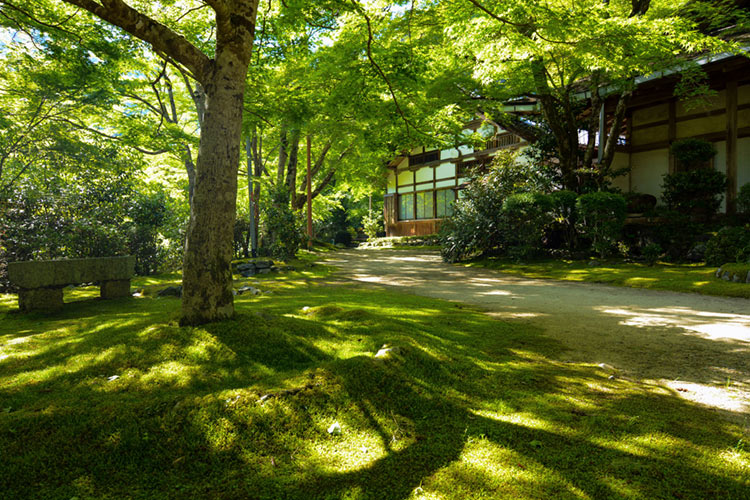
There's not a lot to see at Saimyou-ji. It has the usual religious buildings, ponds, maples, and mosses that are staples of Japanese temple sites. I probably wouldn't pay for entry except in the peak of autumn, which is likely why I wasn't charged a fee during the rest of the year. For a free walk-in though, it's a nice finisher to the Kiyotaki to Takao Trail and worth the extra little walk at the end.


